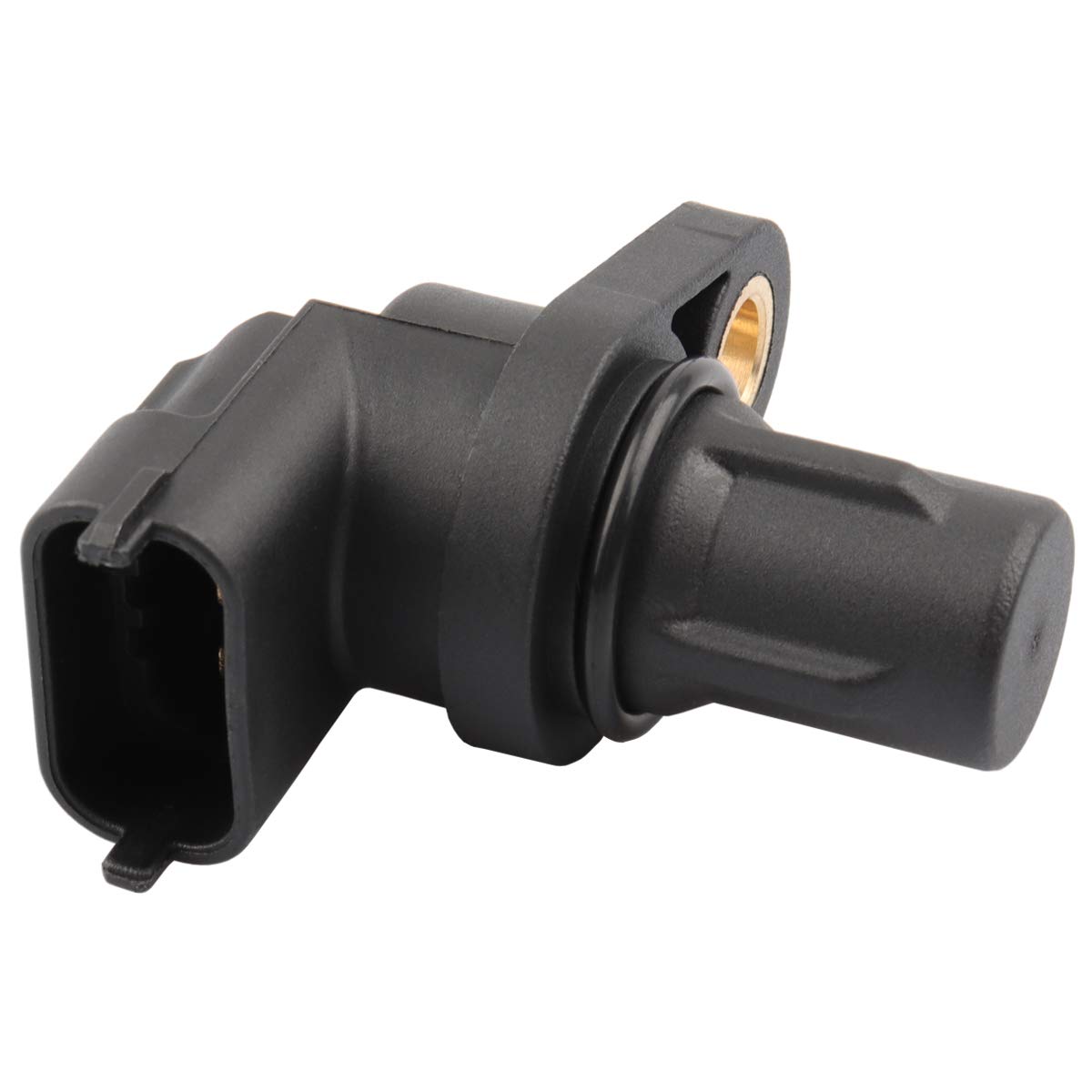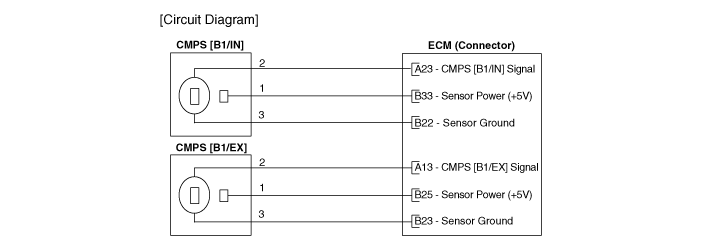9000+ Cashless
Network Garages
96% Claim
Settlement (FY23-24)
24*7 Claims
Support
Click here for new car
I agree to the Terms & Conditions
9000+ Cashless
Network Garages
96% Claim
Settlement (FY23-24)
24*7 Claims
Support
Click here for new car
I agree to the Terms & Conditions

You can find camshaft position sensors in almost all modern vehicles. It is an essential component of any automobile as the device ensures the engine functions properly.
Learn about how this device works and the types and symptoms of a faulty camshaft position sensor.
A camshaft position sensor, or CAM Sensor, is an electronic device in almost all vehicle makes and models. It measures the rotation and position of a camshaft. Then, it transfers this data to a vehicle's Engine Control Module (ECM).
ECM needs this data to control spark and fuel to ensure the engine works efficiently. Impact of such a function results in three consecutive advantages – ignition of the air and fuel blend at the right time, enhanced fuel economy and engine power, and reduction in tailpipe emission.
If you drive a modern vehicle, the camshaft position sensor decides which cylinder is in its power stroke relative to a crankshaft position. This provides fuel and a spark to start the engine when you press the accelerator.
As a CAM sensor plays a vital part in the proper functioning of an engine, multiple symptoms may denote a problem in this sensor. Some common ones are discussed below:
When the fuel injectors cannot deliver proper fuel, you might experience stalling of your car's engine. One possible reason for such a scenario can be a faulty CAM sensor.
A faulty camshaft position sensor will eventually lead to the engine losing power. This will lead your car to surge forward or shake randomly. Both can result from PCM or powertrain control module receiving improper information from the CAM sensor.
A faulty CAM sensor can lead a car engine to consume more fuel than usual. This is probably due to fuel injectors putting more fuel into the combustion chamber. This is one of the rarest symptoms. However, you should not neglect this and contact a technician immediately to get it checked and repaired.
Like most timing-based operations, such as spark control, the signal from the camshaft sensor is necessary to control fuel injectors. A faulty sensor can cause an engine to misfire, resulting in vibrations while accelerating.
This is another associated symptom of a failed sensor. Your vehicle may not be able to accelerate swiftly in addition to jerking. This, again, is a problem of inefficient fuel supply to the injectors.
The first sign you will probably notice when a camshaft sensor begins to malfunction or fails is the "Check Engine" light. This indicator can come up due to many reasons, of which a faulty CAM sensor is a possibility.
Your vehicle may fail an emission test for all of the above-stated reasons. These symptoms can indicate other problems, as well as a faulty CAM sensor. Hence, you should get this component checked along with the others post a failed emission test.
If your vehicle has an automatic transmission system, you may face greater difficulty shifting gears with a faulty camshaft sensor. You can turn off your car's engine, wait a bit and restart to escape this problem.
However, if ECM receives data from a faulty CAM sensor, it can prevent the shift solenoid from shifting gears. This goes by the name of “Limp Mode”. It limits the engine speed to prevent further damage to an engine.
A faulty CAM sensor can accidentally dump unutilised fuel into a vehicle's exhaust system. This not only reduces fuel economy but creates black fume from the tailpipe. This unburned fuel causes a gaseous smell which is dangerous to inhale.
Here are some common functions that a CAM sensor performs:
CAM sensors determine which cylinder is on its power stroke.
It monitors the rotating angle of the camshaft in relation to the crankshaft position.
ECM utilises this information to adjust spark timing and fuel injector operation.
In a subsequent action, the CAM sensor determines which injector to ignite.
It is also used for COP or coil-on-plug ignition systems (coil firing event).
There are primarily three types of camshaft position sensors. These are discussed below:
Hall Effect CAM Sensor is placed on the camshaft or inside the distributor.
This type of CAM sensor comes with three wires. The first wire is for reference power, the second for its ground, and the third to send signal voltage to the computer.
Hall Effect Sensor has a screen with a slot and a magnet attached to the shaft. The sensor turns on or off with screen movements between the magnet and the sensor.
The magnetic field splits and interrupts the feedback voltage if the screen has a solid view in front of the sensor.
You can find the magnetic sensor mounted on the camshaft or inside the distributor, similar to a Hall Effect Sensor.
However, unlike a Hall Effect CAM Sensor, the magnetic-type sensor has two wires. It generates its own voltage, an alternating current sine wave signal.
This sensor is placed near the camshaft with a magnetic device attached. Hence, each time the magnet passes through the sensor, it creates a magnetic field. The consequential pulse is sent to the ECM for processing.
This type of CAM sensor differs from the other two types and generates an AC voltage signal as an output. ECM produces a high frequency for the exciter oil. You can find the exciter oil near the rotating disc.
The rotating disc comes with a slot and is attached to the end of the camshaft. When the camshaft slot passes through the coil, it gets ignited by mutual induction. As a result, it sends a signal to the ECM indicating the position of the first cylinder.
This type of sensor is prevalent in engines of Vauxhall ecoTEC.

The working principle of a camshaft position sensor is a simple one. ECU or engine control unit has to decide which cylinder to ignite next in a sequential fuel injection system. It decides the same by collecting information from the cylinder identification sensor.
The sensor sends a signal to the onboard controller whenever the first cylinder is at the top centre during engine rotation. Hence, the duration of pulse injection is calculated.
On the other hand, the onboard controller doesn't identify the cylinders in the simultaneous fuel injection system, as it is not necessary for the system to function. Detecting the particular cylinder happens when a crankshaft or distribution advance ignition signal occurs by identifying the mechanical location of the crankshaft, valves, camshaft, or distributor shaft.
You can locate Camshaft Position Sensor near the camshaft. However, the exact location of the sensor varies depending on a vehicle's make, model and design. Typically, it is placed on top of an engine or near the front side of it.
You may also find this sensor behind the timing cover in rare cases. Otherwise, it can also be located on top of the cylinder block or one or both ends on the intake manifold, which is generally near the timing cover.
If there is no ignition, a car engine will fail to start, detecting some fault in the camshaft position sensor. Most modern cars will detect this problem and use the crankshaft position sensor as an alternative.